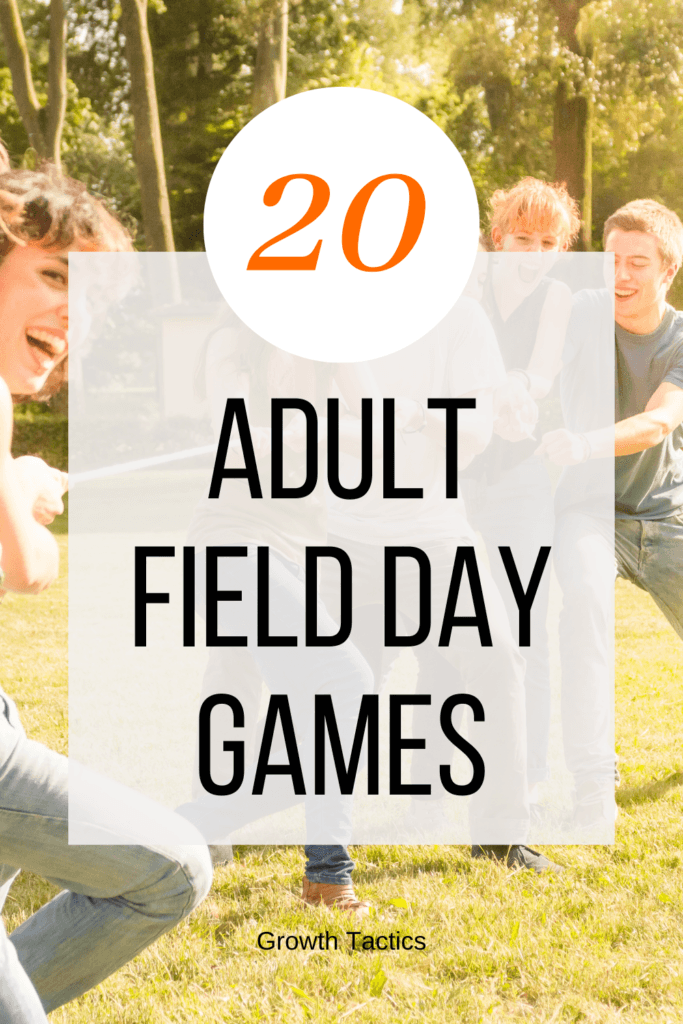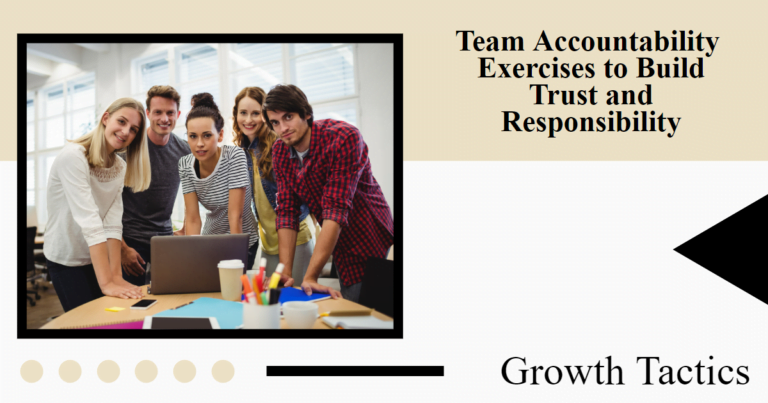Field day games aren’t just for kids; they’re an exciting way to foster teamwork, camaraderie, and friendly competition among adults too.
Whether you’re organizing a team-building corporate event, a community gathering, or a simple get-together with friends, adult field day activities offer a unique opportunity to build relationships and challenge each other in fun and meaningful ways.
By embracing the spirit of leadership and collaboration, you can turn any day into a memorable field day event.
Jump To Section
What Are Adult Field Day Games?
Adult field day games are outdoor activities and competitions designed for grown-ups, typically used in team-building events, corporate outings, or community gatherings. These games draw inspiration from traditional children’s field day activities but are adapted to suit adult participants. They often include:
- Physical challenges: Such as relay races, obstacle courses, and tug-of-war
- Coordination games: Like egg and spoon races or hula hoop contests
- Team-based activities: Including volleyball, capture the flag, or parachute games
- Strategy-focused games: Such as scavenger hunts or water gun fights
How Can Adult Field Day Games Add to an Organization?
Adult field day games can significantly benefit an organization in several ways:
- Promote Team Building
- Enhance Communication Skills
- Boost Morale and Employee Engagement
- Develop Leadership Skills
- Encourage Healthy Competition
- Promote Physical Activity and Wellness
- Break Down Hierarchical Barriers
- Enhance Problem-Solving Skills
By incorporating adult field day games into organizational events, companies can create a more cohesive, communicative, and motivated workforce while providing a fun and memorable experience for all participants.
1. Relay Races
Explanation of Different Types of Relay Races
Relay races are the backbone of any successful field day event. They not only test speed and agility but also demand seamless teamwork and communication. The beauty of relay races lies in their variety, each offering a unique challenge that caters to different skill sets.
Examples: Classic Baton Relay, Water Bucket Relay, and Hula Hoop Relay
- Classic Baton Relay: The classic baton relay is straightforward but powerful. Each team member runs a segment of the race, passing the baton to the next teammate. This activity is a great way to sharpen your focus and improve coordination, much like passing the torch of leadership in the Air Force.
- Water Bucket Relay: This variation adds a layer of complexity by incorporating water buckets. Teams race to fill an empty bucket with water using smaller containers. It’s not just about speed but about careful handling and conservation too. This mirrors real-life scenarios where resource management is key.
- Hula Hoop Relay: In this fun twist, participants must pass a hula hoop down the line by stepping through it while holding hands. It requires flexibility, quick thinking, and cooperation – all essential traits for successful team-building.
2. Sack Race
Rules and Setup for a Traditional Sack Race
Setting up a sack race is simple yet effective. Each participant steps into a sack that reaches their waist. The race starts with everyone at the start line, hopping towards the finish line in their sacks. The first team whose members all cross the finish line wins.
Importance of Coordination and Teamwork
A sack race isn’t just about who hops the fastest. It’s about maintaining balance and rhythm. Participants must synchronize their movements, making it a perfect exercise in coordination. Just as in any mission, every individual’s effort and coordination contribute to the success of the whole team.
3. Wheelbarrow Race
How to Organize a Wheelbarrow Race
Organizing a wheelbarrow race involves pairing participants into teams of two. One person acts as the “wheelbarrow” by walking on their hands, while their partner holds their legs. These pairs then navigate a course, trying to reach the finish line.
Tips for Ensuring Safety While Fostering a Spirit of Competition
Safety is paramount. Ensure the course is free of obstacles that could cause injuries. Encourage participants to communicate clearly, much like crew resource management often practiced in the Air Force. This race isn’t just about reaching the finish line first; it’s about learning to trust and support your partner through every challenge.
4. Three-Legged Race
Strategy and Teamwork for Succeeding
In a three-legged race, partners stand side-by-side and tie adjacent legs together. The objective is to reach the finish line as quickly as possible. Success hinges on synchronized movement and effective communication. This race teaches you to move as one unit, thinking not just about your own steps but those of your partner too.
Inclusion of Variations to Make It More Challenging
For added complexity, consider incorporating obstacles or requiring partners to carry an object together. These variations demand higher levels of teamwork and problem-solving, enhancing the overall experience and mirroring the adaptive thinking required in real-world situations.
5. Egg and Spoon Race
Description and Setup of the Egg and Spoon Race
In the egg and spoon race, participants balance an egg on a spoon and walk or run towards the finish line. The challenge is to prevent the egg from falling. Dropping it means going back to the start line, emphasizing caution over speed.
Focus on Balance and Precision
This game is all about balance and precision. It teaches you to move carefully and deliberately, mirroring the meticulous attention to detail that leadership often demands. Each step towards the finish line is a lesson in maintaining composure and focus, essential qualities for any leader.
6. Tug of War
Using a Rope for a Classic Game of Tug of War
A rope, strong enough to handle the might of competitive teams, is central to any tug of war. Positioning is key. Ensure equal numbers on each side and mark the middle of the rope with a distinctive flag or marker.
Emphasizing Strength and Collective Effort
In tug of war, it’s not just individual strength that wins; it’s about how every team member pulls together. This game echoes the principle of unity and shared purpose, much like how an Air Force squad works seamlessly to achieve a mission. The collective effort symbolizes that every pull, no matter how small, contributes to moving the whole team forward.
7. Balloon Pop
Instructions on Setting Up a Balloon Pop Game
For a balloon pop game, you’ll need balloons and chairs. Inflate the balloons and tie them to each participant’s ankle. The goal is to pop your opponents’ balloons while protecting your own. This simple setup transforms any open space into a battlefield of agility and strategy.
How This Can Be an Excellent Icebreaker
Balloon Pop is more than just a game; it’s an engaging icebreaker that fosters quick thinking and fast movement. Participants learn to be nimble and strategic, essential skills in any team setting. It breaks down barriers, encouraging laughter and interaction, and making everyone feel included.
8. Hula Hoop Contest
Different Ways to Incorporate a Hula Hoop
Hula hoops aren’t just for spinning around your waist. Consider activities like a hula hoop relay, where participants move an object through the hoop without using their hands, or contests to see who can keep multiple hoops spinning the longest.
Promotes Agility and Fun
This contest promotes agility, rhythm, and a sense of fun. It challenges participants to change their approach, adapt quickly, and maintain focus – all essential attributes of effective leaders. The light-hearted competition also adds joy to the event, reminding everyone that having fun is as important as winning.
9. Parachute Game
Using a Parachute for Team-Building Activities
A large, colorful parachute can be a powerful tool for team-building. Gather participants around the parachute, each holding an edge. From simple activities like raising and lowering it to more complex tasks like creating “parachute waves” or tossing a ball on top, the parachute invites collaboration.
Variations Such as Ball Tosses and Group Coordination Tasks
Variations in parachute games – like synchronized ball tosses or moving balls from one hole to another – test coordination and group strategy. These games mimic real-life scenarios where different roles and synchronized actions lead to mission success. They highlight the importance of coordinated efforts for achieving common goals.
10. Water Gun Fight
Organizing a Refreshing Water Gun Fight
Water gun fights are the perfect way to inject a burst of energy and cool down on a hot day. Equip participants with water guns, and set clear boundaries for the play area. You might even create “safe zones” for participants to refill their water guns.
Ensuring Rules for Fair Play and Safety
Safety and fair play are paramount. Make rules clear: no shooting at close range, avoid aiming at the face, and ensure everyone knows the boundaries. The emphasis on rules parallels the discipline and respect essential in any leadership role. This game underscores the balance between spirited fun and respect for everyone’s well-being.
11. Obstacle Course
Designing a Challenging Yet Fun Obstacle Course
Creating an obstacle course is about pushing limits while having fun. Start by mapping out a space. Include different zones that cater to various physical skills. Ensure it’s tough but manageable – the goal is to challenge without excluding anyone.
Integrating Different Elements Like Cones, Ropes, and Buckets
Use cones to set paths and boundaries. Ropes can be for climbing, balancing, or swinging. Buckets could be part of a carrying challenge. Each element should engage different muscle groups and skills, much like how various roles in the Air Force rely on distinct strengths to achieve a shared mission.
12. Volleyball Game
Setup of a Volleyball Net for a Competitive Game
Setting up a volleyball game starts with a sturdy net and a designated court. Ensure the space is level and boundaries are clear. Divide participants into equal teams to keep competition fair and spirited.
Focus on Teamwork and Strategy
Volleyball is more than just hitting a ball over a net; it’s about communication and strategy. Like in any leadership role, knowing when to pass, set, or spike parallels decision-making skills crucial to mission success. Emphasize team synchronization and encourage players to strategize together for each play.
13. Wheelbarrow Race
Detailed Setup and Rules
To set up a wheelbarrow race, you’ll need a clear path – avoid obstacles that could cause trips or falls. Pair participants, one as the “wheelbarrow” and the other as the “driver.” The “wheelbarrow” walks on their hands while the “driver” holds their legs. Establish start and end points and be sure to outline these with visible markers.
Balancing Safety and Excitement
Safety is essential. Encourage participants to warm up before the race. Ensure the pairs communicate throughout the race to avoid falls. This activity is about trust and synchronization, reflecting how clear communication can drive success in high-pressure situations like those faced in Air Force operations.
14. Capture the Flag
Rules and Objective of Capture the Flag
Capture the Flag is a game that hinges on strategy and speed. The field is divided into two territories, each with a flag. The main objective? Capture the opposing team’s flag and bring it back to your territory without getting tagged.
Team Strategies for Winning
Winning requires strategic planning. Teams need scouts to locate the flag, defenders to protect their own, and runners to make the capture. Much like in a tactical operation, every member has a unique role that contributes to the overall success. It’s a lesson in strategy, quick decision-making, and collective effort.
15. Bucket Brigade
Setup and Rules for a Classic Bucket Brigade
For a bucket brigade, you need a source of water, empty buckets, and a container at the end. Line up participants between the water source and the container. The task is to pass the bucket down the line, fill the container, and move as much water as possible within a time limit.
Teamwork and Coordination Highlight
Success in a bucket brigade relies on perfect coordination. Each person plays an integral part in the chain, reinforcing the idea that everyone’s role, no matter how small, is crucial for the team’s goal. Like in any Air Force unit, it’s about smooth, seamless operations, and the synergy between members.
16. Frisbee Toss
Different Variations of a Frisbee Toss
The frisbee toss can be more than just a simple throw and catch. Introduce variations like distance challenges, accuracy targets, and trick shots. These different methods cater to various skill levels and interests, ensuring everyone has a chance to shine.
Encouraging Friendly Competition and Skill-Building
Encourage participants to challenge themselves and each other. Friendly competition fosters growth and resilience. Each throw, catch, and aim is an opportunity to improve hand-eye coordination, focus, and reflexes – all crucial skills not only in sports but in leadership and everyday tasks.
17. Scavenger Hunt
Organizing a Fun and Challenging Scavenger Hunt
Creating a scavenger hunt involves thoughtful planning. List items that are hidden in various locations. Ensure the hunt is challenging enough to engage, but not too difficult to frustrate. The balance is key. Structure the game to stimulate creative thinking.
Encouraging Problem-Solving and Teamwork
A well-crafted scavenger hunt is more than just finding items. It’s about solving problems and working as a team to achieve a common goal. Just as in the Air Force, where every mission requires quick thinking and collaboration, this hunt will train participants to think on their feet while leaning on their team for support.
18. Relay Balloon Pop
Combining Relay Race Dynamics with Balloon Popping
In the relay balloon pop, combine the speed of a relay race with the fun of balloon popping. Set up a relay track where each participant runs to a checkpoint, pops a balloon, and retrieves a hidden item or message inside. This adds an extra layer of excitement and challenge.
Fun and Engaging Way to Incorporate Both Activities
Safety and fun are paramount. Ensure balloons are easy to pop and the running path is clear of hazards. This activity merges the quick decision-making needed in a relay with the joy of a surprise inside each balloon. It’s a way to test agility and quick thinking while having a blast.
19. Scavenger Hunt
Organizing a Fun and Challenging Scavenger Hunt
Creating a scavenger hunt involves thoughtful planning. List items that are hidden in various locations. Ensure the hunt is challenging enough to engage, but not too difficult to frustrate. The balance is key. Structure the game to stimulate creative thinking.
Encouraging Problem-Solving and Teamwork
A well-crafted scavenger hunt is more than just finding items. It’s about solving problems and working as a team to achieve a common goal. Just as in the Air Force, where every mission requires quick thinking and collaboration, this hunt will train participants to think on their feet while leaning on their team for support.
20. Closing: Score Wins Ceremony
How to Wrap Up the Field Day Event with a Closing Ceremony
Conclude the event with a ceremony that highlights achievements. Gather everyone and start with a recap of the day’s activities. Announce winners, but also recognize effort, sportsmanship, and teamwork. This is a moment to celebrate every participant.
Celebrating the Achievements and Encouraging Reflection on the Importance of Teamwork and Leadership
Use this closing to not only award prizes but also to reflect on the broader lessons. Tie in experiences from the day to leadership and teamwork. Mention specific examples where individuals helped others or showed great leadership. This reflection reinforces the idea that every role and effort is vital, much like in any team or mission.
Conclusion
Adult field day activities do more than offer a break from routine; they build bridges between teammates, push personal growth, and remind everyone why teamwork matters. Every relay race, hula hoop contest, and sack race completed isn’t just a game, it’s a lesson in leadership, trust, and purpose.
So, gather your group, pick up the rope, and race to the finish line. Make each field day game a chance to discover new strengths and deepen connections. Let’s turn every field day event into a celebration of what we can achieve together.
Did you enjoy this article on adult field day games? Don’t forget to share and subscribe below.








